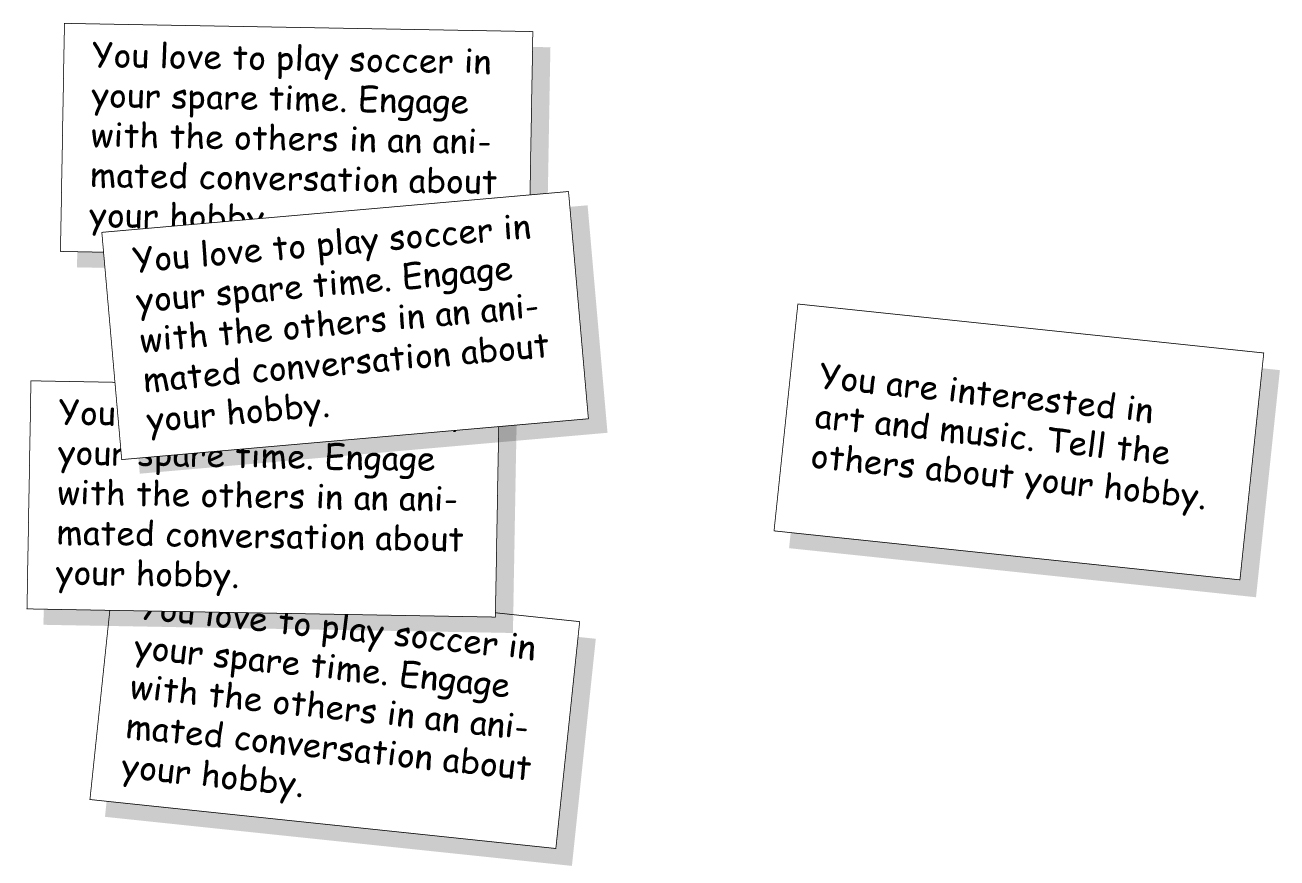Hints:
- It is helpful if the students already have had experiences with role play. The important rule is that comments may only be made after, but not during the role play!
- Source: http://www.fippev.de/t3/fileadmin/fippev/userdaten/PDF/Anti-
Bias-Ordner/Diskriminierung_Antibias_in_der_Schule.pdf
Procedure:
- Information to the students: to conduct a role play, presenting a situation in wich four persons engage in a lively discussion about a theme from which the fifth person is excluded. (See above example). Other examples: 4 cards about the topic “vacationing at the beach”, 1 card “vacationing in the mountains”; 4 cards about the topic “trouble with the teachers”, 1 card “positive classroom experiences”)
- Five volunteers receive each one card and chat about the topic (whereby it becomes soon apparent that someone is consistently talking at cross purposes). The five volunteers sit in a circle; the rest of the students sit around them. The role play lasts at most 10 minutes. It can be repeated with another set of cards if time allows.
Example of role cards

- In the ensuing final reflection session, the class is discussing key questions, such as:
- How did the participants feel during the role play, how do they feel now?
- What did the observers notice?
- Relative to the general mechanisms and motives for exclusion: why did the exclusion occur in this play, and what other situations of exclusion do you know? How could this painful exclusion have been avoided?
- Possibly compile a number of exclusion situations which are characteristic for our society; discussion of strategies to change these situations.






